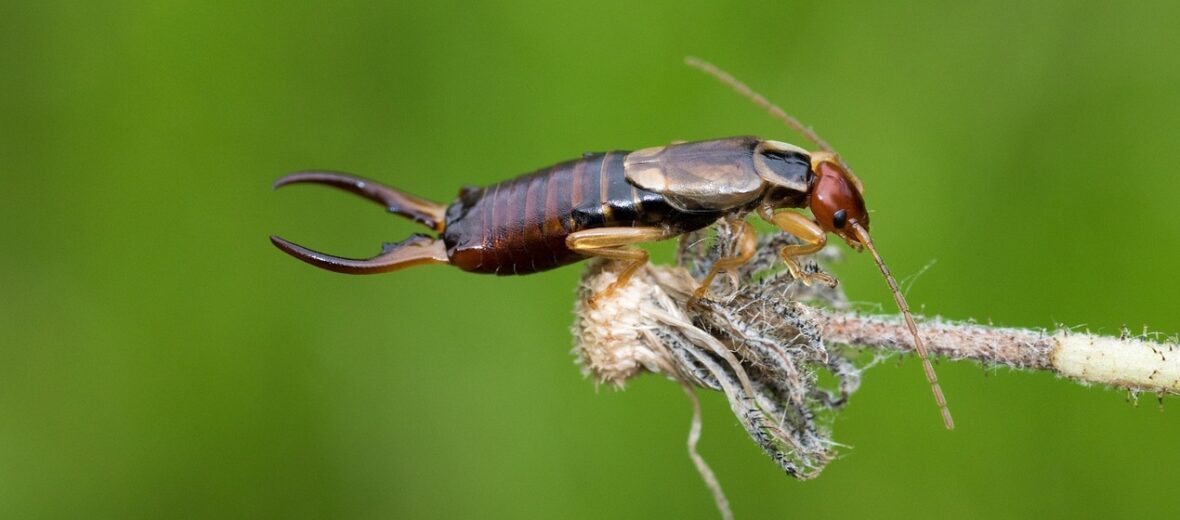
The earwig… there’s more to them than you’ve heard. There are approximately 1,700 known species of earwigs in the world. You can find them lurking in dark and/or damp places, like under rocks and logs, to your bathroom and your basement. These critters have been around for over 200 million years, so they probably aren’t going anywhere anytime soon. They exist on every continent except Antarctica. The main question you might have though is “do they actually climb into your ear and lay eggs in your brain?” Keep reading and find out.
First the Stats…
Scientific name: Dermaptera
Length: Up to 2 inches
Lifespan: Up to 1 year
Now on to the Facts!
1.) First off, their pincers… Pincers are curved in males yet straight in females.
2.) These little critters don’t transmit disease nor are they defensive.
3.) They are predominantly nocturnal (active at night), but can sometimes be found during the day (diurnal), if they are disturbed.
4.) These fascinating creatures are capable of secreting pheromones that help them find each other.
5.) Earwigs feed on a variety of plants and other smaller insects.
I know, “The ears! Get to the ears already!” Patience, Padawan.
6.) Their primary predators are lizards, amphibians, beetles, and a variety of birds; not to mention pesticides.
7.) Mating season takes place in Autumn.
Did you know…?
Their pincers are used as self defense and in combating rival males, but they aren’t strong enough to hurt a human or pet.
8.) Females undergo delayed implantation, in that she stores the sperm in her body until the spring.
9.) The female will lay 3 – 50 eggs that hatch in about 7 days.
10.) We’ve reached the end and to answer your burning question, contrary to popular belief, earwigs do not burrow into your ear and lay eggs in your brain. The ear canal is not a suitable place for them and thus they stay away. So you’re safe… for now.
Now a Short Earwig Video!
Also, check out the Critter Science YouTube channel. Videos added frequently!
Want to suggest a critter for me to write about? Let me know here.



